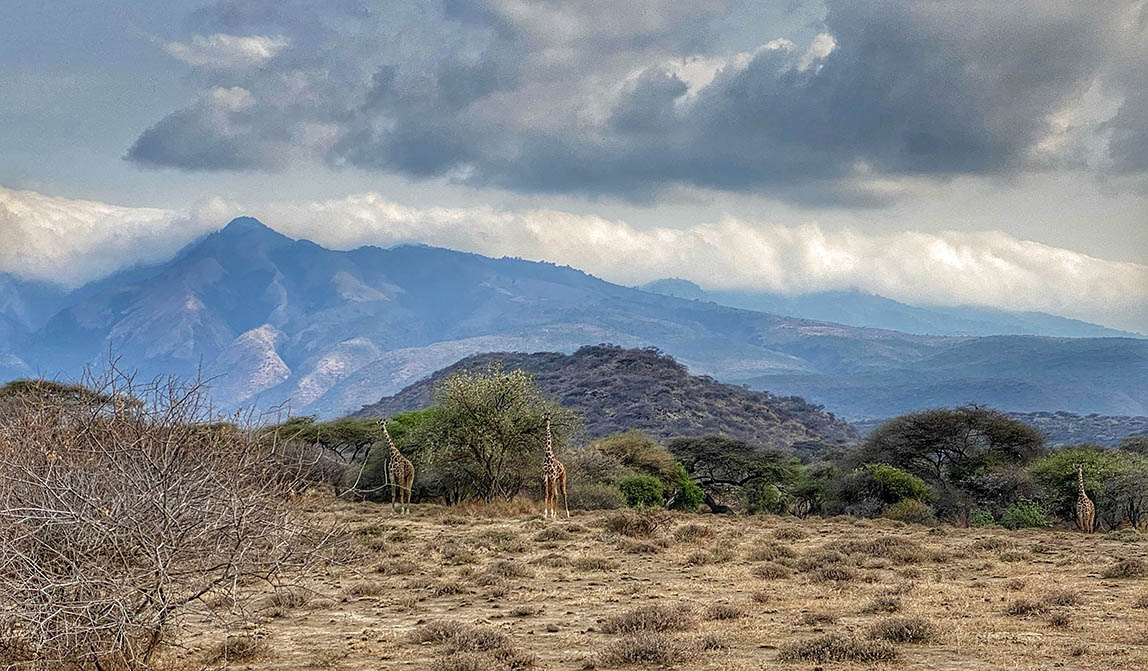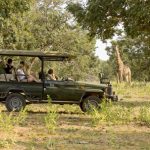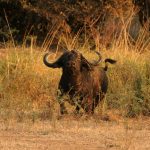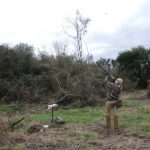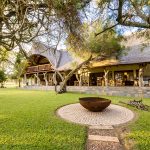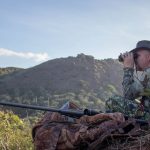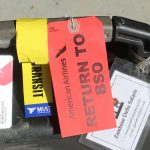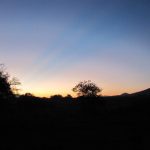Braving COVID and travel hassles to experience an unforgettable adventure in Tanzania.
East Africa feels like southern Africa without the guard rail. Anyone who’s ever spent any time there can attest that its danger matches its startling beauty, making the region a premier destination for the traveling hunter. Tanzania is massive, and still very wild; less than 15 percent is accessible by paved road, and medical attention can be days away. The mosquitoes alone can kill you. Sure, everyone knows about COVID, but locals will tell you it’s the hippos you need to worry about.
After the international travel standstill of early 2020 had eased, my husband, Ricardo, and I made our way to Tanzania as quickly as we could. We hunt together worldwide, but instead of just traveling with rifles and archery equipment this time, we were also armed with facemasks, industrial-strength hand sanitizer, and negative COVID-19 blood tests. Our original booking was on Turkish Airlines, which unexpectedly canceled all flights to Tanzania for September and October due to COVID concerns; unfortunately, they had not bothered to let us know until we arrived in Chicago from Texas on the day of our departure. The clock was ticking, as Tanzania requires proof on arrival of a negative COVID test within 72 hours of departure. Despite our efforts, we were unable to get onto alternate airlines that evening. The following morning, at 5:30 am, we caught the first flight to Dulles, for a series of connecting Ethiopian Airlines flights that took us to Addis Ababa, Ethiopia, on to Zanzibar, and finally to Kilimanjaro Airport in Arusha.
Oh, the joys of travel, especially in this crazy COVID era. We arrived in northern Tanzania with just three hours remaining on our COVID test’s validity, and very eager to start our thirty-five days in Masailand with Tanzania Big Game Safaris. We were greeted by Lorne Ramoni, our primary professional hunter, Dustin Van Staden, our second professional hunter, and Barry Bingle, apprentice hunter.
I was handed an arrangement of fresh flowers—well played, gentlemen–and several men assisted us with luggage and clearing Ricardo’s archery equipment through customs. From the airport, the Monduli Camp is about a three-hour drive. The company had arranged for all staff to be COVID-tested before our arrival. The staff sanitized everything daily, and they offered to have all staff wear masks. At our request, however, the first thing to go was social distancing and face masks.
The free-range concession area is approximately 650 square miles, which is the size of the Houston city limits and is considered relatively small by Tanzanian standards. Arriving at our tented camp (ladies, think glamping), we were welcomed by about thirty staff members who keep the concession and lodge running smoothly. There was still enough light to allow Ricardo to sight-in his bow in preparation for the next day’s hunt. Finally, after the hectic journey and settling into camp, we were able to sit around the fire and contemplate the riots, economic uncertainty, and health concerns of the modern world happening so far from us. We had peace with the knowledge that tomorrow we’d be leopard-crawling through the dust after game. It was good to be back in Africa.
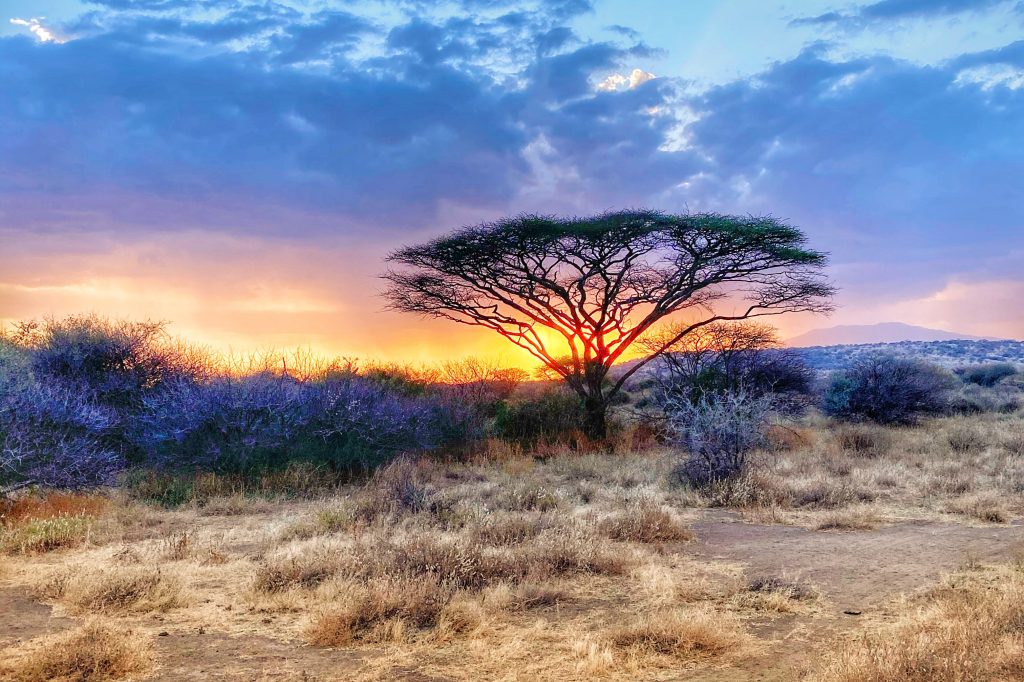
Monduli
I had previously hunted in Masailand with my father, Joe Hosmer, in the mid-2000s, and I wanted Ricardo to experience the region. The Monduli area is rolling with a few tall, rocky outcrops and numerous dry riverbeds. It looks relatively scrubby, with a peppering of taller flat-topped acacias, the vegetation all a monotone of different winter grays and brown. It’s not the most picturesque area, but does it ever produce some unbelievable trophy specimens of gerenuk, lesser kudu, Thomson gazelle, Kirk’s dik-dik, and Grant gazelle.
At first light we were off, bouncing about in the back of the Land Cruiser. Walk-and-stalk-style bowhunting is not a straightforward endeavor, especially in open country; however, with the plethora of Maasai goat and cattle herders passing through, the game was used to human disturbance. While trying for a gerenuk, Ricardo and I donned the traditional Maasai red shuka fabric, walking slowly behind a big, red, two-dimensional cow decoy. This got us within about 150 yards of several antelope, but never close enough.
Dusty and Barry had seen an exceptional gerenuk in another area several days prior, and Lorne wanted to see if we could find him. As we turned a corner on the path, we spotted the gerenuk, Ricardo’s number-one priority for the hunt. We split up, with Dusty, Barry, and myself positioning ourselves on higher ground, watching Ricardo, Lorne, and the game scout as they wove in and out of the vegetation to get closer to where the gerenuk was last spotted. As we watched with anticipation, we could hear the hollow ding-ding-ding of Masai cattle bells, and soon we spotted a cattle herd led by a Morani, a Masai warrior, who proceeded to move his herd between Ricardo’s group and the gerenuk. Spooked, the gerenuk trotted off. The three hunters then stepped out of the vegetation, appearing like ghosts from the bushes, to the Morani’s wide-eyed bewilderment. They chatted for a bit, and through the binocular, I saw the Masai take off his personal shuka cloth and hand it to Lorne. Now the hunters had proper cover scent in their favor, as well as the appearance of Masai. Ricardo and Lorne followed the herder, walking upright and nonchalant, with about twenty head of cattle. Around the bend of the path, the gerenuk stood erect, browsing with its head in a bush. As the cattle wandered around, Ricardo was able to get within forty yards of the gerenuk and make a killing shot.
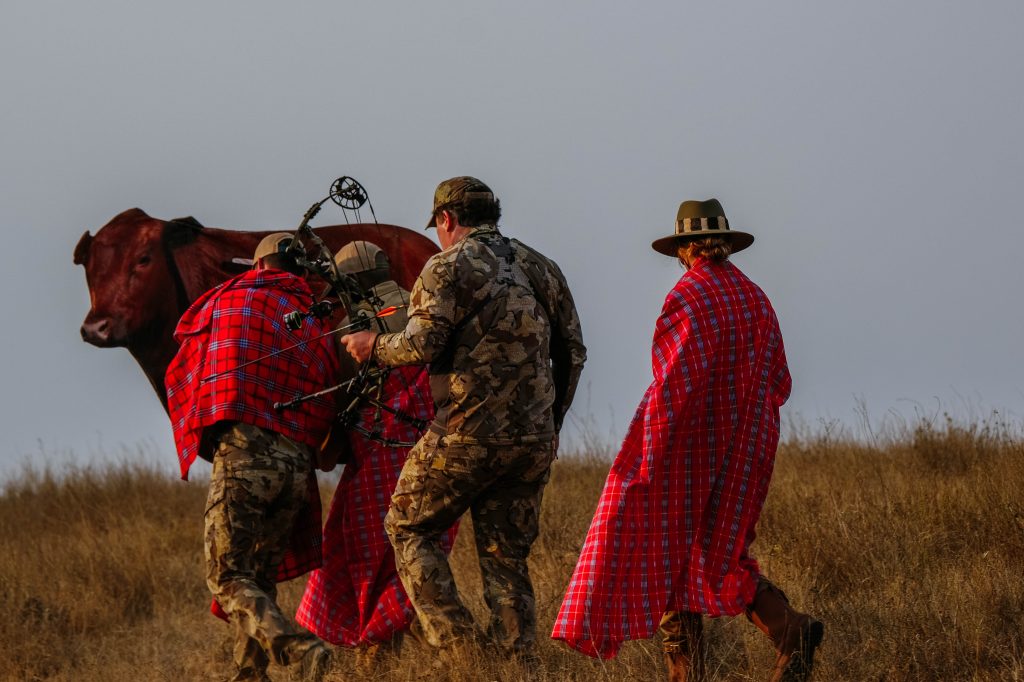
On another day, Ricardo had shot a Kirk dik-dik and we drove up a mountain to set up for some scenic field photos. From high on the mountain, Dusty spotted several very nice lesser kudu browsing in the valley below. Quickly finishing up the photos, Lorne and Ricardo made their way slowly down the steep slope, wobbling on lose rocks, and pausing every few feet to untangle each other from the dense thorn thickets. Being now at the same elevation as the lesser kudu, Lorne and Ricardo had no idea what direction the animals had moved, and with exaggerated hand signals, we guided them from above. There was a massive flock of guinea fowl between Ricardo and the lesser kudu, and as the team slowly zigzagged their way in closer, their movement startled the flock. The guinea fowl flew up in a massive explosion, and Dusty, Barry, and I, watching from above, thought for sure the long stalk was over. However, the lesser kudu instinctively stopped when the birds took flight. Lorne whistled sharply, and Ricardo was able to let an arrow fly from forty yards away. The hunters watched the animal dart off into the brush, but from above, I was able to see exactly where the kudu went down in a puff of dust. It was a perfect heart shot and an impressive stalk.

One of the most challenging elements of hunting on foot in Masailand is that while stalking, you are constantly bumping into other species of game. Often we would be stalking one species and suddenly get an opportunity for another species and have to make a split-second decision to modify the hunt. With the quality and quantity of game on these well-managed concessions, there were always a lot of ears and eyes in the bush. In ten days of hunting, Ricardo collected seven species, most of which were new number ones with a bow. At a time when so much of life seemed to be canceled or postponed, when there was so much separation from friends and family, it felt good to be back in a wild place, hunting. As every campfire turned to embers, we counted our blessings.
Ruvu
After fourteen days in Monduli, we traveled about four hours to another of Tanzania Big Game Safari’s concessions, also considered to be within the Masailand ecosystem, called Ruvu. This area is known for its Cape buffalo, Patterson eland, fringe-eared oryx, East African greater kudu, Coke hartebeest, and impressive East African impala. Most of the game was concentrated in heavy thickets of brush dotted with ancient, towering baobabs and funky-looking euphoria trees. A few weeks was not enough for intimate knowledge of this 1,000-mile- square area, but there was a quick and intense sensory absorption with the magic of hunting the land.
In Ruvu, I helped collect some leopard bait and camp meat. Ruvu is one of the most beautiful camps we’ve stayed in. Expansive canvas tents and private bathrooms were well-appointed with local artifacts, handsome local textiles, and cool objects found in the bush. The best part of the camp was its main dining room, bar area, and campfire, nestled among several huge boulders at the base of a small mountain. The site offers an incredible vista of the surrounding hunting lands unfurling into the dusty haze. Changing camps is like starting a new chapter–a whole new hunt.
The following evening we came across a stunning East African greater kudu standing in the brush, about 300 yards away. There was no way for Ricardo to get within bow-shot distance in the brush with the light fading fast. A wild-eyed Lorne grabbed me and said to get the rifle ready. This kudu was too good to pass up. We hustled along the edge of the brush, shielding our silhouettes, and got set up on shooting sticks. Just 100 yards away, as I watched through the scope, I could tell the kudu was uncertain where we were, but he seemed to sense our intentions. He moved, alert to danger, with straight-legged stomps, ears fanned out, and nostrils flared. Lorne watched through his binocular and walked me through the shot, anticipating the kudu’s movements. Catching my breath from the dash, I settled steady on the shooting sticks and balanced my right elbow on Lorne’s shoulder, and the shot was accurate and clean.
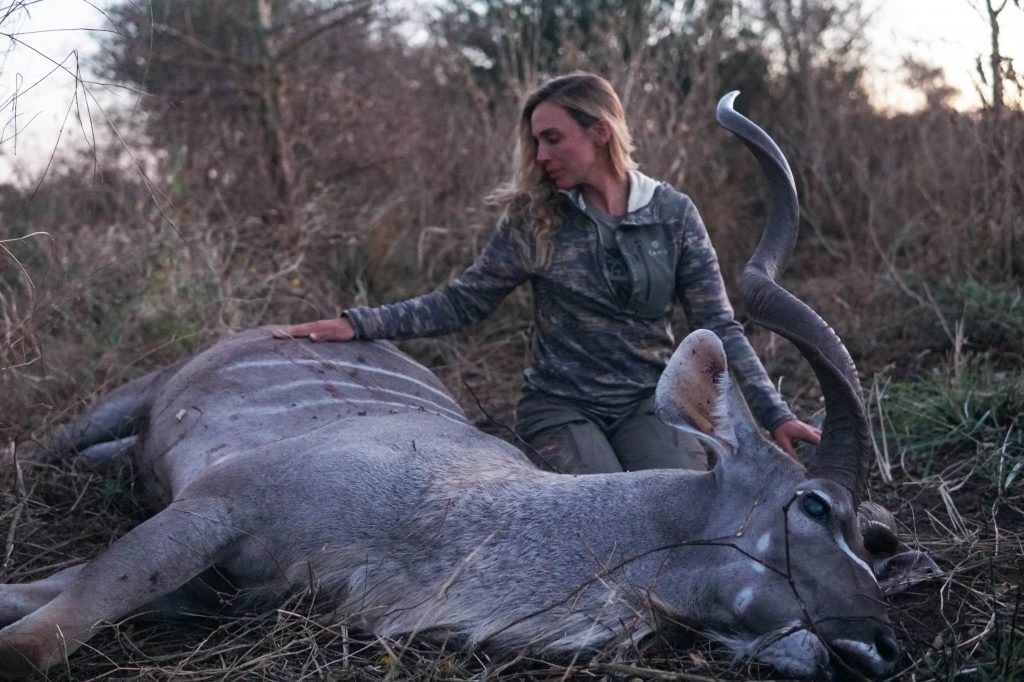
The following afternoon we had a very unusual hunting experience. Lorne and I were stalking a herd of fringe-eared oryx that kept spooking despite our best efforts to keep the wind in our faces and our outlines concealed; there were just too many eyes aware of our presence. Then two bull Coke hartebeest moved in the same direction as the oryx herd, and broke off to the far right. The area had been intentionally burned by the Masai cattle herders, making the ground crunchy underfoot, and it was challenging to get close enough to judge the trophy quality between the two. When the hartebeest moved off, we were able to make a broad, sweeping loop to get within a hundred yards for a better view and subsequent shot. My hartebeest went down; the other, however, was confused and stayed within about fifty yards of his fallen comrade.
The Land Cruiser was only about a half-mile away, and the crew heard the shot and came up toward us as Lorne and I hunkered down behind a bush watching the second hartebeest. Lorne scuttled back to the vehicle and told Ricardo to grab his bow. He had no time to explain the situation, and I think Ricardo was more perplexed than the hartebeest! I couldn’t help but giggle at the scurry of confusion on the vehicle. I remained hunkered down in the bush, watching everything unfold, as Lorne and Ricardo belly-crawled past me and into position about fifty yards ahead of where I knelt. The second hartebeest had moved off, but not far. Ricardo drew, and with an arrow planted in the hartebeest’s vitals, it was game over. Two Coke hartebeest within a matter of minutes! These animals are typically very skittish, and it is an impressive feat to take one with a bow.
In recent years, the Masai have become increasingly less nomadic and are opting more often for a semi-permanent, agrarian lifestyle. They clear the land of all brush, creating protective boma walls around soon-to-be cash crops like tobacco, corn, and cotton. The Masai cut and remove all the small trees and then line the base of the trunks of the massive trees with firewood, like a medieval witch-burning pyre, to burn down the ancient trees they cannot fell by hand. Then these giant hardwoods are burned into charcoal, adding to the illegal charcoal market. I felt a pang of anger mingled with sympathy at all the new farms and bomas I saw being built in the hunting concession, knowing there was nothing we can do, as it is technically legal. With new settlements come additional problems: increased human-wildlife conflict, overconsumption of ecological resources, illegal mining operations, poaching, and habitat destruction, and these are the main reasons for declining wildlife populations in Tanzania.
Because of COVID, international hunting and tourist dollars for humanitarian aid and conservation have dried up considerably this past year. This is evident in the increased illegal timber felling and bushmeat poaching we saw firsthand, and we learned that Tanzania Big Game Safaris’ private anti-poaching teams have intercepted far more bushmeat poachers this year compared to last. The impact of hunters traveling to remote parts of the world is crucial to conservation, and this is why hunters need to travel now, more than ever. Hunting and eco-tourism dollars give direct value to wild places that otherwise would have greater monetary value as mines, slash-and-burn agricultural lands, and new settlements. I highly recommend taking advantage of the opportunity to travel this coming year to support wildlife as well as our outfitter friends. Despite the uncertainly we all face, we need a reason to dream. Plan your hunts; book your adventures; the time is now–go.

